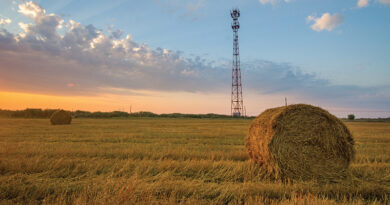Rural Broadband Opportunities
By Dave Wachob
We are in unprecedented times in the cable industry. Both downstream and upstream data usage has increased since the pandemic, as more people work from home, school from home and entertain from home. Additionally, the FCC has recently allocated funds through their Rural Digital Opportunity Fund (RDOF) to serve millions of rural Americans and another $100 billion of potential broadband funding included in President Biden’s proposed $2 trillion infrastructure package, if passed by Congress. Both represent major opportunities for industry growth in the next 10 years.
In their December 7th, 2020 release of results from the Phase I RDOF auctions, the FCC allocated $9.2 billion to deploy high speed broadband to over 5.2 million unserved homes and businesses. Nearly all these locations (99.7%) will have access to 100 Mbps downstream and 20 Mbps upstream as a result of the allocated funds.
Possible implementations
The first alternative would be to install “fiber deeper” into the rural unserved/underserved areas where broadband access is needed. The advantage of this approach is that it provides a considerable amount of available bandwidth, to not only meet the initial RDOF bandwidth minimum requirements, but to also support future bandwidth growth. Costs to install fiber for cable, telco and smaller telecom providers can be reasonably high depending upon the terrain and distances involved, and how and where the fiber is interconnected to the existing telecommunications infrastructure. Possible deployment technologies include GPON and EPON.
Another option available primarily to cable operators is to extend the reach of their existing coaxial plant, to serve the rural areas. While this approach does have the advantage of leveraging existing infrastructure (coax, fiber and headend), it is somewhat limited in the reach and future bandwidth increases due to signal quality limitations. Another shortcoming of this approach is the labor costs to deploy either coax or fiber which are similar.
One workaround to these limitations is the use of reverse/inverse amps/nodes (aka, HFC extenders) as a “hybrid” approach to extending cable networks. They do so by converting the fringe cable network RF spectrum to fiber and running the fiber(s) to serve the unserved/underserved areas. Once deployed, the optical signal is converted back to the original RF spectrum and distributed to homes and businesses via DOCSIS modems. Extensions of 10-20 km are possible with this approach, making it a cost-effective alternative to extending coax.
Another possible alternative is via telco twisted pair, given it already serves most if not all the rural areas. Advances in DSL over the last 20+ years have enabled respectable data rates from 25 Mbps to 100 Mbps. The challenge in this solution remains its inherent distance limitation of roughly 1 km, but it could be combined with a fiber backbone, depending upon the specific rural population density and distance.
Wireless options include cellular (3G/4G/5G) which can be deployed relatively quickly to unserved rural areas depending on the terrain and distances involved. Once the cell towers and interconnections are installed, there isn’t further infrastructure required to provide service, only having access to the wireless signals. The challenge in providing broadband access with this approach lies in network capacity. Estimates suggest that broadband subscribers may use 20x the data of a mobile subscriber, casting concerns over meeting actual broadband usage.
Fixed wireless provides another delivery option, either with licensed or unlicensed spectrum. While potentially viable, distance, terrain, interference and capacity concerns could limit its ultimate use.
Lastly, satellites could be used to service the rural broadband market. Once the constellation of satellites has been deployed, further network costs to add subscribers are effectively zero. Questions remain with this approach in terms of costs, capacity, coverage and latency which will ultimately determine its success.
Cable operators have various tools available to them to expand broadband access to serve these rural communities effectively and economically.

Dave Wachob,
Chief Business Development Officer,
Antronix
Dave Wachob has been with Antronix for seven years, currently serving as chief business development officer. He has more than 40 years in business development, system design of wired and wireless communications networks, and in product conception. In his more than 25 years in cable and television, he has developed Wi-Fi and cellular systems and products, as well as interactive TV, VoD, EPG, fiber optics, ultra wide band, and DOCSIS systems. Dave holds 27 patents, has published numerous industry papers, and has given technical presentations around the world. He has bachelor’s and master’s degrees in electrical engineering, as well as an MBA in international business.
shutterstock




